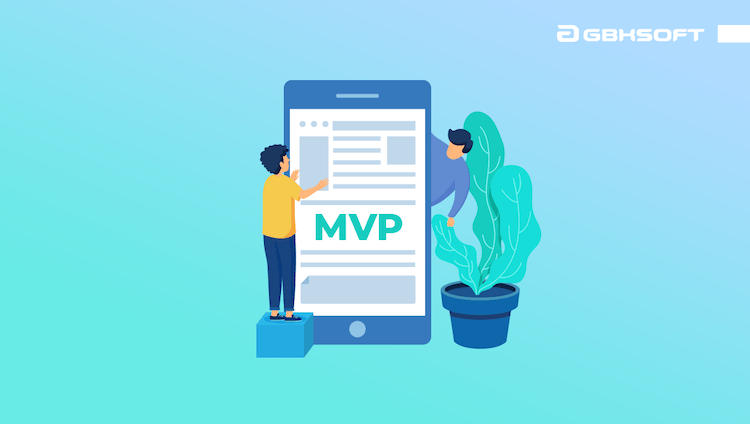According to Reid Hoffman, if you are not embarrassed by the first version of your product, you’ve launched too late. But today, when the competition is tough and the market is full of good or even great solutions, becoming embarrassed is even easier than ever before.
So does it make any sense to release MVP if customers already have an opportunity to use complete products with similar functionality? How to compete with giants in the market? We tried to figure this out based on our experience of software development with startups that became successful.
What is MVP?
Minimum viable product (MVP) is a version of a product with the least but sufficient set of features to meet the following goals:
- satisfy early customers, and
- allow its creators to learn from user interaction with a product and apply this knowledge to further development.
The concept originates from Lean Startup. It is a methodology for product and business development based around iterative releases and validated learning. Hence, the main goal of releasing MVP before the launch of a complete product is to test the business concept behind it at the lowest possible costs. In other words, MVP lets product creators figure out if someone actually needs (and will purchase) the product and, if yes, what should be tweaked to maximize its value.
But if a product is only minimum viable can it catch the interest of customers if there are already feature-rich competitors on the market? We believe it can because being the first does not always mean being the best.
Getting to the market first: is it an absolute competitive advantage?
The short answer is “No”. Indeed, sometimes products win just because they’re unique and got first to the market. Yet, there are also a lot of cases when products became popular despite the existence of strong competitors. How did they manage to do that? Well, if we think about this more thoroughly, we can find at least a few logical reasons.
First of all, so-called followers can explore what is happening on the market. First movers also face some kind of competition because if there is no competition, there is no market. But since there is usually no direct competition, they can get much less market knowledge.
Secondly, if some similar products are already available on the market, it’s easier to see what lacks. As a result, followers have better chances to find their specific niche fast and position themselves accordingly.
And, finally, it’s usually not only about getting a product to the market, the promotion matters as well. Your competitors can have great products but their marketing strategy may be not as good as yours that gives you a lot of chances to overcome them.
Maximize App Growth with #1 App Store Optimization Company
Expand app store reach, increase downloads, boost engagement, lower acquisition costs & achieve higher user LTV with our leading ASO services & technology
Contact Us TodayCase study: Google
Google was not the first search engine on the planet. Neither was it the second. In 1998, when Google launched, 14 other solutions with similar functionality already existed. So how did it become the biggest search engine in the world, having beaten all the competitors, including Yahoo!?
Before Google, search engines were searching for results by comparing a search term to their databases of textual keywords. Consequently, pages with the text that was the most similar to the search term were placed on the top of the list. The problem was that such automated process did not always give the logical results.
So, being the first matters but it’s definitely not an absolute advantage. The followers also have a handful of chances to win the race and conquer customers’ hearts.
But if a product is to be released on the market saturated with similar analogous alternatives, what does ‘minimum viable’ mean? Should such MVP by default contain all features that competition offers? Let’s discuss this in more details.
MVP features: how many are enough?
There is, unfortunately, no exact answer to this question since it depends on too many factors (e.g. business needs, industry, market size, quality of competitors’ products etc). Basically, the options are the following:
- releasing a product that has all features of similar products on the market plus new features
- releasing a product that has only the selected features of competitors’ products plus new features
- releasing a product with only new features
- releasing a product that has only the features that competitors’ products have but their quality is improved
Theoretically, all of the above alternatives can work for certain cases. For instance, in the Google example above, the core function of a search engine remained the same — finding results on a search term. But such function was significantly upgraded and this let Google become the most popular search engine on the globe.
Yet, it’s not always that easy to understand which option would be the best fit for the MVP of your product. Where is the line between satisfying the first customers and building a final product instead of MVP? Let’s discuss this.
How to find a balance
When you’re creating MVP, it’s usually tempting to include as many features as possible in it to keep up with the competition. But in such case, the development process would be lengthy or the quality of a product could suffer significantly. At the same time, the main goal of MVP is to allow creators of a product to learn quickly in the course of a number of iterations.
To figure out what features your MVP should have to still remain a minimum viable product but give you the opportunity to receive necessary feedback from customers, we recommend considering the following aspects:
- Features that make your product different. MVP should let you test the specifics of your product, not the features that are already available on the market. For this reason, you should focus on the unique functionality you offer. This doesn’t mean that your product will never have the standard features — this just means it’s not expedient to add all of them to at the MVP stage.
- Value of industry standards to customers. Notwithstanding the paragraph above, some basic features of competitors’ products are just must-haves, so you cannot ignore them when building your MVP. Hence, do a customer research to assess the value of different features to customers.
- The speed of the development. Building MVP makes no sense if it takes ages. Evaluate the time needed to develop different features. This will allow you to filter features and postpone the creation of some of them until the later stage.
Putting it all together
A highly competitive market is not a reason not to release your MVP because getting to the market first doesn’t always constitute a competitive advantage. So even if there are similar products available, it doesn’t mean you cannot win the race. The key thing is to do a good research and focus on your differentiating features while keeping an eye on what your rivals already offer.
GBKSOFT is a top-rated software development company. Our team of professionals creates top-notch mobile app solutions for businesses of any size. Contact us to order your MVP.











